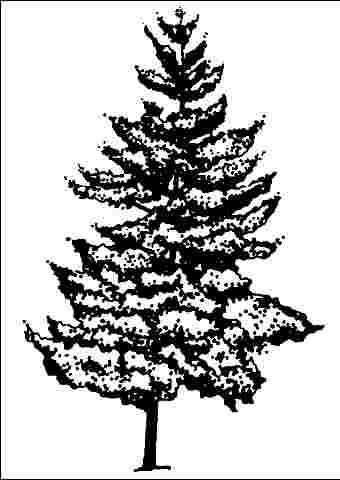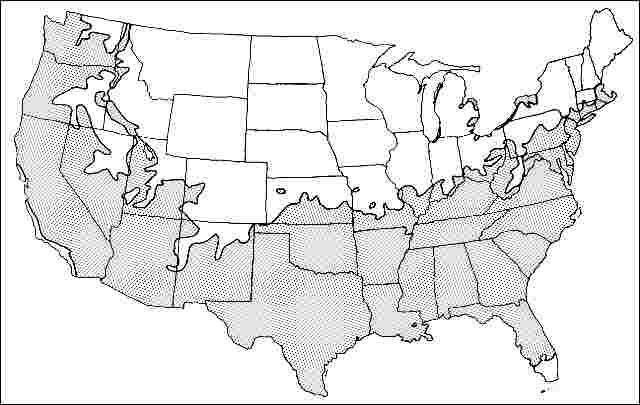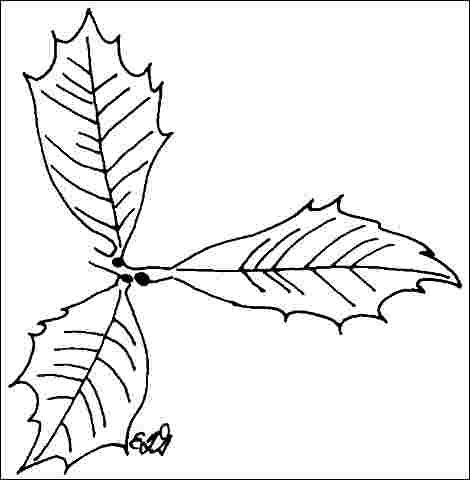Ilex x attenuata 'Fosteri': Fosters Holly1
Introduction
Foster's holly #2 is one of the better cultivars of Ilex x attenuata, part of a group of hybrids between Ilex cassine x Ilex opaca. Foster's holly reaches 15 to 25 feet in height with a spread of 8 to 12 feet, creating a dense, pyramidal silhouette. The trunk usually grows straight up through the crown, unless the tree was topped. The small, glossy, almost black-green, linear leaves have spiny margins, and are joined in spring by showy, small, white flowers. The blooms are followed by the heavy production of brilliant red berries, which persist on female trees from fall through winter.

General Information
Scientific name: Ilex x attenuata
Pronunciation: EYE-lecks x uh-ten-yoo-AY-tuh
Common name(s): Fosters holly
Family: Aquifoliaceae
USDA hardiness zones: 6A through 9B (Fig. 2)
Origin: not native to North America
Invasive potential: little invasive potential
Uses: hedge; parking lot island < 100 sq ft; parking lot island 100-200 sq ft; parking lot island > 200 sq ft; container or planter; screen; specimen; street without sidewalk; sidewalk cutout (tree pit); tree lawn 3-4 feet wide; tree lawn 4-6 feet wide; tree lawn > 6 ft wide; highway median; bonsai
Availability: not native to North America

Description
Height: 15 to 25 feet
Spread: 8 to 12 feet
Crown uniformity: symmetrical
Crown shape: pyramidal, columnar
Crown density: dense
Growth rate: slow
Texture: fine
Foliage
Leaf arrangement: alternate (Fig. 3)
Leaf type: simple
Leaf margin: spiny, entire, pectinate
Leaf shape: elliptic (oval), ovate
Leaf venation: pinnate
Leaf type and persistence: evergreen
Leaf blade length: less than 2 inches, 2 to 4 inches
Leaf color: green
Fall color: no color change
Fall characteristic: not showy

Flower
Flower color: white/cream/gray
Flower characteristics: not showy
Fruit
Fruit shape: round
Fruit length: less than .5 inch
Fruit covering: fleshy
Fruit color: red
Fruit characteristics: attracts birds; showy; fruit/leaves not a litter problem
Trunk and Branches
Trunk/bark/branches: branches don't droop; not showy; typically one trunk; thorns
Pruning requirement: little required
Breakage: resistant
Current year twig color: green
Current year twig thickness: medium
Wood specific gravity: unknown
Culture
Light requirement: full sun, partial sun, or partial shade
Soil tolerances: clay; sand; loam; acidic; slightly alkaline; well-drained; extended flooding
Drought tolerance: high
Aerosol salt tolerance: moderate
Other
Roots: not a problem
Winter interest: yes
Outstanding tree: yes
Ozone sensitivity: unknown
Verticillium wilt susceptibility: resistant
Pest resistance: resistant to pests/diseases
Use and Management
With its dense, compact, upright growth and neat habit, Foster's holly is ideal for use as a tightly clipped screen or hedge, or as a specimen, foundation, or container planting. Can also be planted in a small soil space or in a tall, narrow overhead space. Would probably make a suitable street tree but has not been extensively tried.
Foster's holly should be grown in full sun or partial shade on well-drained, slightly acid, moist soil. It is very drought-tolerant once established and has no serious pest problems.
There are other Foster's hollies—#1 and #4—but these are less available and perhaps not as showy.
Propagation is by cuttings or grafting.
Pests
Scale and leaf miners.
Diseases
No diseases are of major concern.


